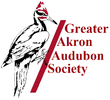Proposed Sherwin-Williams building
last updated 11/11/21
|
Letter Template
|
We have a sample letter that you can
use or adapt as you see fit at: |
| ||||||
|
Places to Send
|
Send your letters to the following:
|
| ||||||
There is a YouTube video explaining the issue at: www.youtube.com/watch?v=YN5ueF8_V2I
What's the Issue?
Matt Shumar, of the Ohio Bird Conservation Initiative, addressed the Council of Ohio Audubon Chapters during the virtually held October 16th Fall Gathering. Paraphrased from his brief presentation is the following:
Sherwin Williams is expanding its presence in Cleveland by building a new headquarters near Public Square. The proposed building design is for a 36-story, 1 million square foot skyscraper to be built with an entirely glass façade. Lights Out Cleveland salvages about 4,000 dead and injured birds each year during spring and fall migrations. Reflective glass adjacent to green spaces is the major issue. Some cities and states have recently passed bird-safe building ordinances and legislation—something OBCI would like to accomplish in Ohio as well.
Until such legislation is reality, we need to work with architects and City planners to ensure that new construction is safe for migratory wildlife. If we truly care about bird conservation, we need to address threats during the entire annual life cycle of migratory birds. Not only are habitats on breeding and overwintering grounds important; we must focus on threats during migration as well.
The “unofficial” word is that letters in support of using bird-friendly glass could persuade the final decisions. Chapters and individuals are encouraged to send as many letters as possible to Cleveland and Cuyahoga County Planning Commission members stressing the importance of including bird-safe glass in the construction of this building. Names and addresses to send letters to are here: Addresses-for-Ltrs-re-Bird-Friendly-SW.docx (live.com) Mailed letters make more of an impact on our public officials. We want to keep our messages positive in tone so that Sherwin-Williams will be considered a leader in good bird conservation and a possible prototype for future legislative action in Ohio. A sample letter you may want to use is given above. Cleveland and Lake Erie are in the Mississippi Flyway North, a major migration route for birds that connects their northern breeding grounds to their southern overwintering grounds. Chapter leaders from northeast Ohio will be sending letters directly to Sherwin-Williams and possibly holding a meeting with their leaders. If you are interested in the subject, here are two good resources about bird-safe glass and bird-glass collisions:
An informative article about bird-friendly glass appeared in Business Insider in July 2020 ('Bird-Safe' Glass That Prevents Collisions Is Finally Catching on (businessinsider.com)).
And in the latest issue of the Birding Community e-Bulletin a book about the glass and bird collision issue is highly praised and recommended: Solid Air – Invisible Killer: Saving Billions of Birds from Windows (2021, Hancock House) by Daniel Klem, Professor of Ornithology and Conservation Biology at Muhlenberg College in Pennsylvania. The book’s contents progress from how birds see, to the enormity of the glass-impact problem, to the sad autopsies of the victims, and the seriousness of convincing the public about the extent of the problem. It’s a must-read for anyone concerned about the glass-and-bird subject and educating the public.
Sherwin Williams is expanding its presence in Cleveland by building a new headquarters near Public Square. The proposed building design is for a 36-story, 1 million square foot skyscraper to be built with an entirely glass façade. Lights Out Cleveland salvages about 4,000 dead and injured birds each year during spring and fall migrations. Reflective glass adjacent to green spaces is the major issue. Some cities and states have recently passed bird-safe building ordinances and legislation—something OBCI would like to accomplish in Ohio as well.
Until such legislation is reality, we need to work with architects and City planners to ensure that new construction is safe for migratory wildlife. If we truly care about bird conservation, we need to address threats during the entire annual life cycle of migratory birds. Not only are habitats on breeding and overwintering grounds important; we must focus on threats during migration as well.
The “unofficial” word is that letters in support of using bird-friendly glass could persuade the final decisions. Chapters and individuals are encouraged to send as many letters as possible to Cleveland and Cuyahoga County Planning Commission members stressing the importance of including bird-safe glass in the construction of this building. Names and addresses to send letters to are here: Addresses-for-Ltrs-re-Bird-Friendly-SW.docx (live.com) Mailed letters make more of an impact on our public officials. We want to keep our messages positive in tone so that Sherwin-Williams will be considered a leader in good bird conservation and a possible prototype for future legislative action in Ohio. A sample letter you may want to use is given above. Cleveland and Lake Erie are in the Mississippi Flyway North, a major migration route for birds that connects their northern breeding grounds to their southern overwintering grounds. Chapter leaders from northeast Ohio will be sending letters directly to Sherwin-Williams and possibly holding a meeting with their leaders. If you are interested in the subject, here are two good resources about bird-safe glass and bird-glass collisions:
An informative article about bird-friendly glass appeared in Business Insider in July 2020 ('Bird-Safe' Glass That Prevents Collisions Is Finally Catching on (businessinsider.com)).
And in the latest issue of the Birding Community e-Bulletin a book about the glass and bird collision issue is highly praised and recommended: Solid Air – Invisible Killer: Saving Billions of Birds from Windows (2021, Hancock House) by Daniel Klem, Professor of Ornithology and Conservation Biology at Muhlenberg College in Pennsylvania. The book’s contents progress from how birds see, to the enormity of the glass-impact problem, to the sad autopsies of the victims, and the seriousness of convincing the public about the extent of the problem. It’s a must-read for anyone concerned about the glass-and-bird subject and educating the public.
